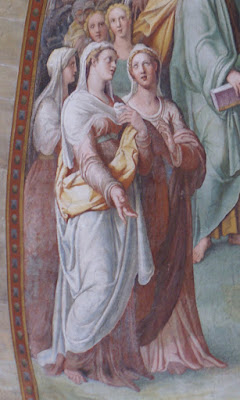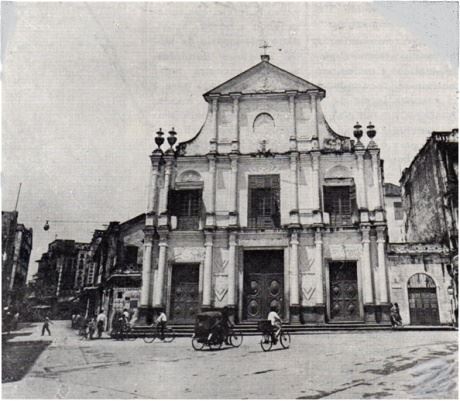Although not incorporated into the present
Roman calendar nor the proper calendar of the Order, today we commemorate the “dies
natalis” of S. Sabina. She is the titular of the Roman Basilica adjacent to the
General Curia of the Order and whose very name evokes our unity to the Roman
Pontiff and our obedience to the Papacy.
Who is Santa Sabina?
 S. Sabina was a Roman martyr who lived in the II
century. She was the daughter of Herod Metallarius, a wealthy Roman nobleman; and
the wife of a Roman senator named Valentinus. After her husband died, Sabina
accepted Jesus and was baptized into the faith through the guidance of her servant
S. Serapia.
S. Sabina was a Roman martyr who lived in the II
century. She was the daughter of Herod Metallarius, a wealthy Roman nobleman; and
the wife of a Roman senator named Valentinus. After her husband died, Sabina
accepted Jesus and was baptized into the faith through the guidance of her servant
S. Serapia.
At that time
Christians experienced the brutal persecution and persecution of the Roman empire.
Christians were captured and imprisoned and many were killed and martyred. In
the year 125, S. Serapia was caught and executed. S. Sabina boldly tried to claim
her body to be properly buried in her family mausoleum, but her actions was
deemed to be criminal and was accused of being a Christian by the Prefect named
Elpidius. Thus, the Roman matron followed Serapia to the path of martyrdom.
Ancient devotion ever new
Both women were honored as martyrs by the
Christians of Rome. In 430, the tomb of Santa Sabina was transferred above the
Aventine Hill inside the famed Basilica built in her honor by Pietro d’ Iliria.
This basilica was constructed on the property where her home once stood, and is
considered as one of the most beautiful Ecclesiastical structures in the city
for the sense of equilibrium and nobility of the decors, a true hallmark of
paleo-Christian architecture. So important was this Basilica for Rome that it
was chosen to be one of the Stational Churches for Lent, and aptly assigned it
as the Stational Church for Ash Wednesday, a day so intimately linked to the
Order of Preachers. Thus when the tradition was restored by S. John XXIII, it
has been the venue of the papal mass and the solemn imposition of the ashes for
the members of the Papal curia and the city.
Santa Sabina and the Dominicans
By the early part of the XI century, this basilica
complex became part of the fortress known as the Roca Savelli which overlooks
the Tiber and became part of the patrimony of the Patrician Savelli clan. Honorius III, who was a Savelli then ceded
the Basilica and adjoining properties to S. Dominic and his brethren when the
friars surrendered the Church of San Sisto in order to house the Roman nuns who
accepted the reforms of S. Dominic. It was not only a reward for the great
service S. Dominic had done for the Pope in reorganizing the nuns of the city,
but also a gesture of esteem and love of the Papacy to the newly formed Order
of Preachers.
Since then Santa Sabina served as the home for
the friars and its venerable walls and floors bear silent witness to the
countless men and women who had passed through its hollowed space. Aside from S.
Dominic himself, other prominent friars also lived and left their mark in this
Church and convent: S. Raymond of Penyafort, S. Hyacinth and B. Ceslaus, S.
Thomas Aquinas, S. Pius V and B. Hyacinth Marie Cormier. Yet throughout a
greater part of our history it has been greatly eclipsed by the more popular
Santa Maria sopra Minerva in central Rome as more representative of our
presence in the Eternal city.
In the second quarter of the XX century, when
Santa Sabina was recovered from the state confiscation of Church properties and
the need of a functioning Motherhouse like those of modern religious
congregations and orders, the General Curia of the Order was transferred to
this priory and since then till this day, it has been the headquarters of the
Order of Preachers and the official residence of the Masters of the Order. In
this way, it perpetuated the legacy of Santa Sabina in our modern psyche.
Today as the Church honors S. Sabina and her
servant S. Serapia, may these two valiant women of God who had welcomed the
Order into their home intercede for us and give us the courage and fidelity to
live the Gospel of Jesus Christ so that we may worthy to preach it to the
world!


